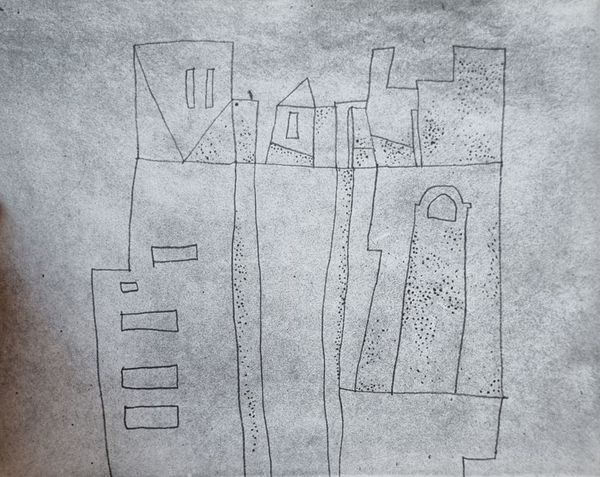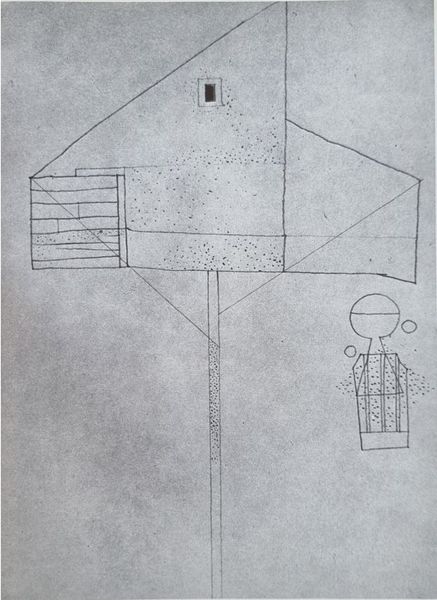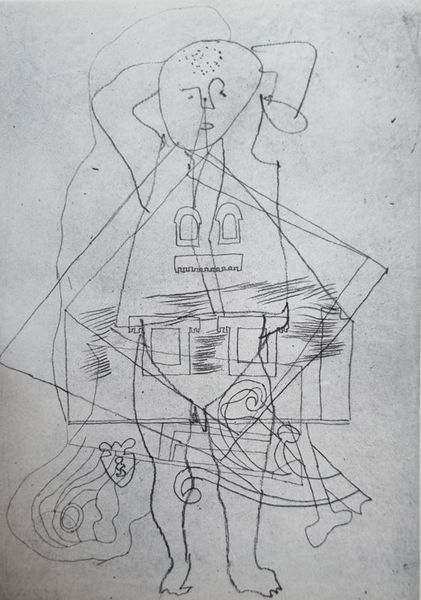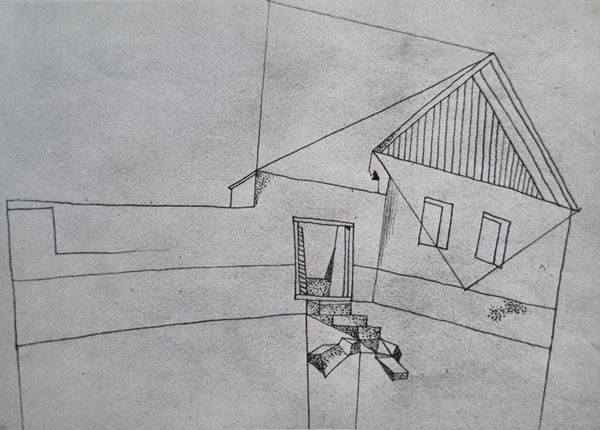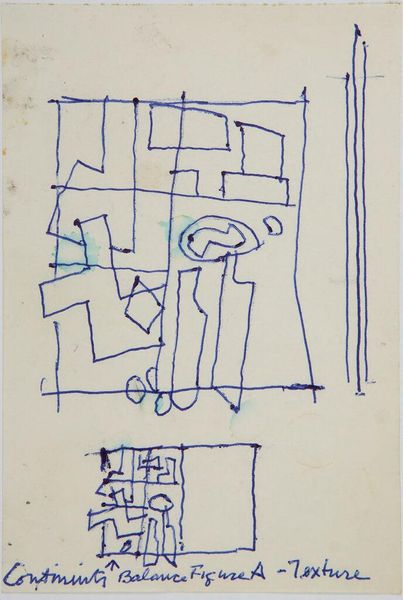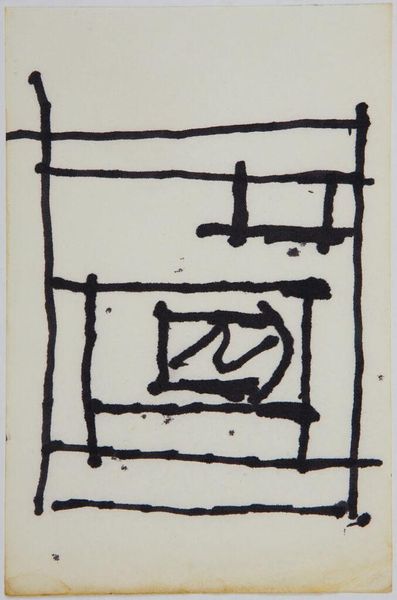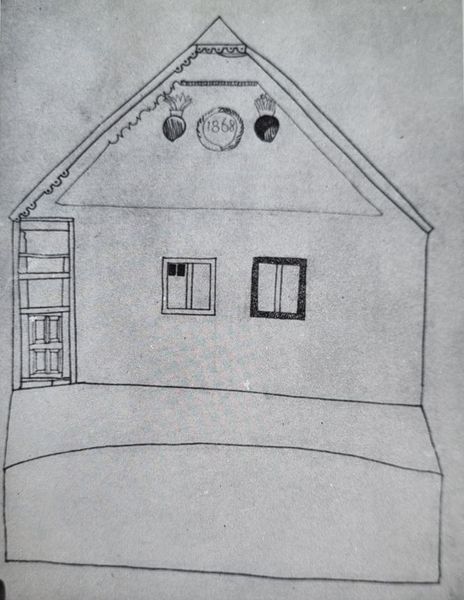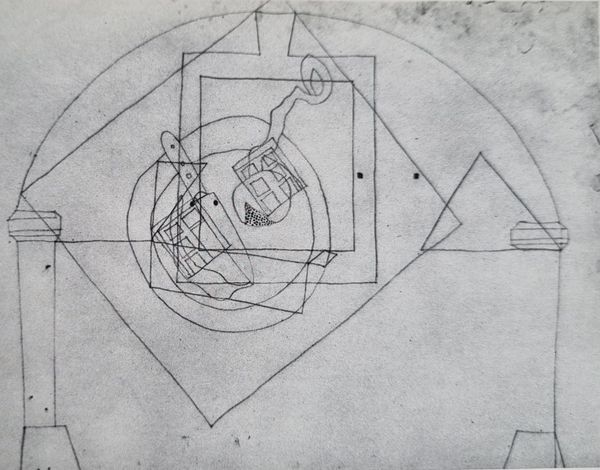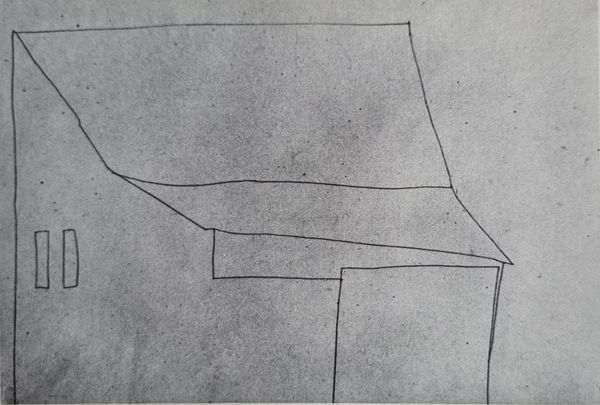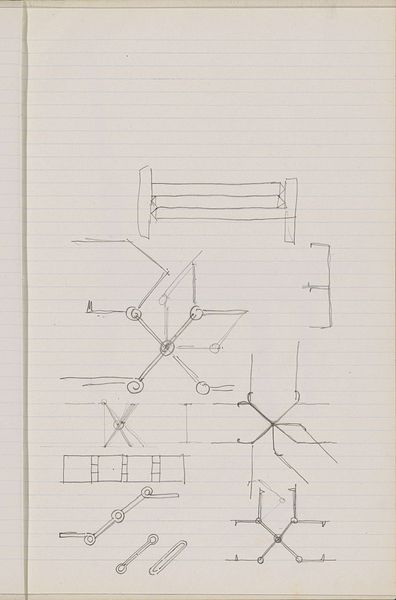
drawing, graphite
#
drawing
#
cubism
#
amateur sketch
#
quirky sketch
#
sketched
#
incomplete sketchy
#
abstract
#
form
#
personal sketchbook
#
idea generation sketch
#
sketchwork
#
geometric
#
line
#
graphite
#
sketchbook drawing
#
sketchbook art
#
modernism
#
initial sketch
Copyright: Public domain
Curator: I’m struck by the fragmented yet oddly harmonious quality of this sketch. Editor: Indeed. What we have here is a graphite drawing entitled "Vajda Lajos Kék Szürke Ablakokkal," which translates to "Vajda Lajos, Blue-Grey Windows." Vajda Lajos was a key figure in the Hungarian avant-garde of the 20th century, and this piece exemplifies his engagement with modernism, specifically his unique approach to cubism. Curator: The windows… they look like more than just architectural features, almost like eyes peering out from within the abstract structure. The sharp angles contrasting with those softly smudged areas. It feels like a mind trying to piece together reality. Editor: The recurring motif of the window is prominent throughout his oeuvre, often functioning as a portal, or an ambiguous space between interiority and exterior reality. Consider the historical context. This was drawn in 1936, during a period of rising fascism and social upheaval in Europe. Could the fractured forms represent a world on the brink of disintegration? Curator: It's fascinating how a seemingly simple drawing technique embodies that political turmoil and personal introspection. The blue-grey palette only heightens that sense of unease, doesn’t it? The geometric abstraction doesn't quite resolve, and it hangs there in tension. Editor: The geometric shapes do provide a certain structural order to his compositions. This could represent attempts at finding order within the chaos, a recurring theme amongst artists of that era grappling with rapid changes. I'm compelled by the repeated shape of what appear to be small carriage windows offset into the picture plane, their presence unsettling and yet suggestive of movement and transience. Curator: Looking at this drawing, I am reminded about art’s role in bearing witness during tumultuous times, both reflecting and shaping how societies understand themselves and the changing world. Editor: Agreed, and thinking about its presence within a museum context, this work prompts the crucial inquiry as to how we continuously renegotiate our understandings of history via imagery. The ability of art to provoke dialogue across time never ceases to amaze.
Comments
No comments
Be the first to comment and join the conversation on the ultimate creative platform.
